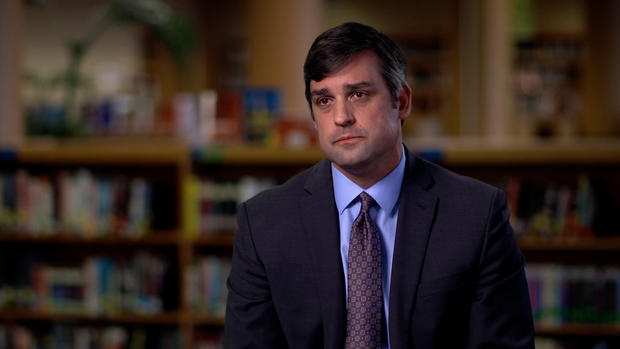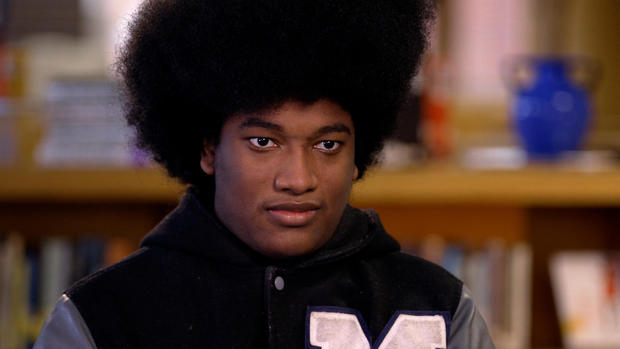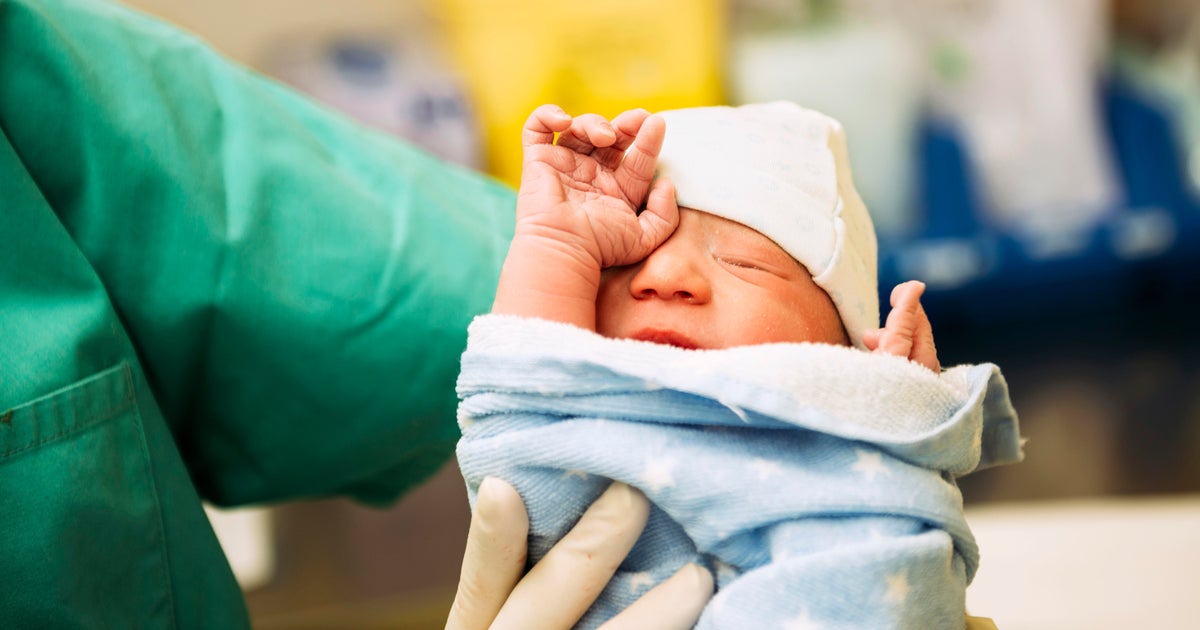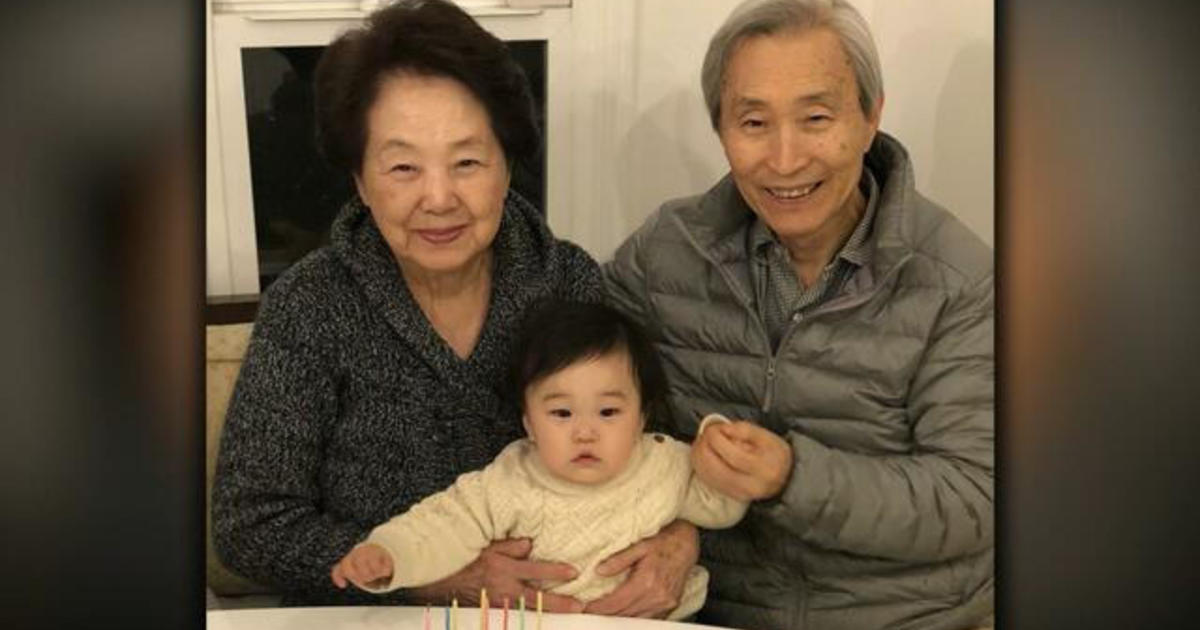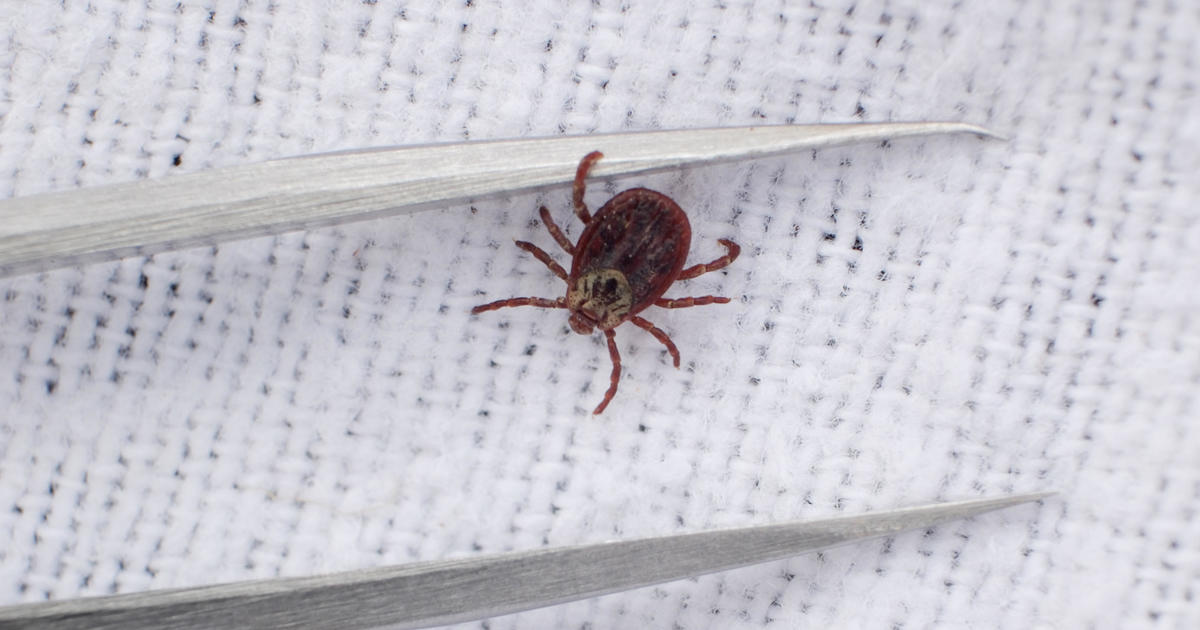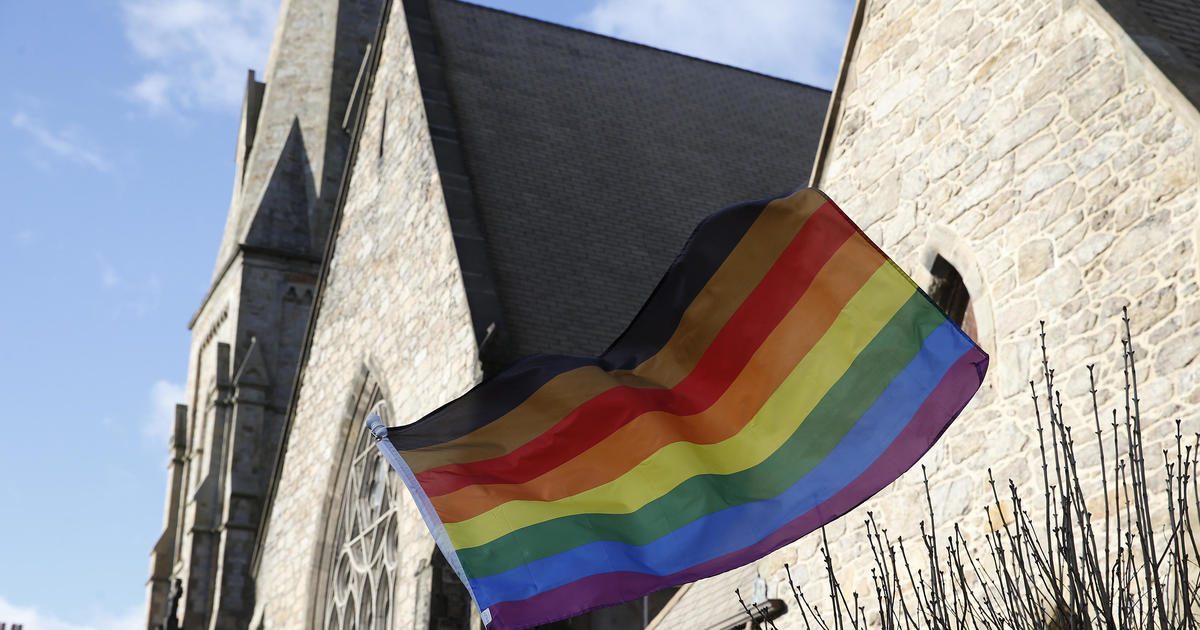Learning what it takes to bring students back to school amid the pandemic
At least a quarter of American students are believed to have not spent a single day in school in more than a year because of the pandemic. Many others are only in classrooms now and then. It's taking a psychological toll on children and parents.
President Biden told the nation that it may have set back an entire generation of students by a year or more. Everyone wants kids to return to school, but how do you do that safely? We thought we might find some answers by visiting one of the first school districts in the country to work with researchers from the Centers for Disease Control and Prevention on a study designed to understand how coronavirus spreads within school buildings. Schools in Marietta, Georgia stayed open through some of the highest periods of infection in the community. But it hasn't been easy. It's required money, constant vigilance, and – for those in charge – comfort with uncertainty.
Grant Rivera: I never know what tomorrow is gonna bring. At times where I'm, like, going for a walk by myself, I actually try to remember what I used to do.
Grant Rivera is the superintendent of Marietta City Schools, overseeing 12 schools, almost 9,000 kids and plenty of concerned parents.
Grant Rivera: There have been decisions that I've made throughout this pandemic, where I definitely have-- have-- have angered some people. And there have been some people that have told me they would legally challenge it. There have been some people that told me I didn't know how to do my job.
Rivera thought he was doing his job when he delayed opening schools last August. Teachers were worried about their health, and COVID testing facilities were backlogged, making it hard to quickly identify those infected. But 300 parents signed a public letter disagreeing with his decision, and some went a step further.
John Dickerson: I heard they took out an ad in the paper?
Grant Rivera: Yeah and…
John Dickerson: Wait, no what is that like?
Grant Rivera: And my heart sinks as you ask me that question.
John Dickerson: Why?
Grant Rivera: Because we made a decision that was based on what we felt was aligned with the science and the data. And it's real simple, right? We couldn't test. So we could have people in the building and have no clue whether they should be there or not.
By September, testing capability had improved, and Marietta City Schools started re-opening. In-person instruction has been available four days a week at all grade levels since early November. The district has spent more than $7.5 million retro-fitting itself for the pandemic. Most of the money came from the federal government.
At West Side Elementary School, partitions separate the desks. In class, everyone must wear a mask, some students attend virtually.
Facilities are constantly being cleaned, and ventilation systems have been upgraded. Even returned library books must sit in quarantine before going back on the shelves.
Students who ride buses carry radio frequency identification tags so that if one tests positive, the school district can contact families of those who sat close by.
Grant Rivera: We've had situations where we've had 60 close contacts for one positive case: So we have an entire team-- in three different languages, who are available on a moment's notice. And, literally, we pull the seating charts, we pull the rosters. And then we immediately start notifying families.
Students who might have been exposed to the virus must quarantine for seven to ten days, disrupting their lives and their family's all over again.
Grant Rivera: So I can call you at 10:00 tonight and tell you that your child was sitting within six feet of another child who tested positive, and you may not be able to go to work tomorrow, and you may not have child care.
These procedures have been tailored through close consultation with CDC researchers who spent two months mapping positive cases in the Marietta School District to determine how the coronavirus spreads through schools.
Grant Rivera: When we first started this project with the CDC, I was convinced that we were gonna have more transmission in middle and high school classrooms than we had in elementary. What surprised me as we worked through this is that it was actually the exact opposite that we were seeing more potential transmission in an elementary classroom than we were in a middle and high school classroom.
John Dickerson: And what was the ultimate reason for that?
Grant Rivera: Well, so think about the dynamics in an elementary classroom. You've got a child that walks in, that stays in that classroom seven hours, eight hours. Those kids are mixing and milling. They-- they may go to the rug, they may go to small group. And I think that's where we figured out: Wait a minute, we gotta reengineer our elementary classrooms because this data is compelling.
Kindergarten teacher Sarah Pulley used to huddle with her class on the rug for reading time. Now, she teaches from the front of the class and limits small group time and close interactions.
Any student in Marietta can choose to learn online. In the elementary schools, most kids are back in class. But over at the high school, most still attend by Zoom. Researchers believe that may explain some of the reduced risk in the high school, but it also makes it harder for teachers like Andy Cole, who calls students at home his "Aoomies," and those in class his "Roomies."
Andy Cole in classroom: "Zoomies, questions? Roomies, questions?"
John Dickerson: and what are the challenges of trying to teach when you've got Roomies and Zoomies?
Andy Cole: I always worry that I'm leaving them out.
John Dickerson: Because your back's to them or because it's inert and it's on a screen?
Andy Cole: You know, sometimes it's just the human being in front of you-- definitely takes a lot of your attention. And with these guys, I-- I do get concerned that, you know, they're gonna forget school. Y-- at least how that-- that-- that structure of school and those shared experiences.
Some students in Marietta told us they liked virtual education—there's no commute, the health risk is lower--but for others it's been a disaster. Richard Rowe was getting A's and B's before the pandemic. When instruction went virtual, he says, he started getting C's and D's.
Richard Rowe: I felt really helpless because I really couldn't do anything. I-- I also felt-- scared because I didn't really want to go to my teachers. I didn't really go to my parents, as well, because--
John Dickerson: Why not?
Richard Rowe: --I didn't want 'em to be disappointed in me.
John Dickerson: Did you have an idea where-- why that was happening?
Richard Rowe: I have ADD, so I have a hard time paying attention.
John Dickerson: And so what was it like? You came back…
Richard Rowe: It felt good, it felt really good to get out of the house. It felt really good to see my friends again.
His grades have gone up again too. He was recently named student of the month.
John Dickerson: Do you think it would have changed your life forever if you'd had to stay home and-- and learn virtually?
Richard Rowe: Yeah.
John Dickerson: What do you think the ultimate result would have been for you?
Richard Rowe: I don't know, I really don't really like thinking about that.
John Dickerson: Too scary?
Richard Rowe: Yes, way too scary for me.
What's been scary for the teachers is the disease itself. The local educator's union organized protests in the school district bordering Marietta after three teachers died there from complications of COVID-19. The CDC researchers tracking Marietta Elementary Schools found that "approximately one half" of the school-based cases they identified seemed to begin with "educator-to-educator transmission" and then spread to students.
Grant Rivera: We had two clusters of cases that originated with adults in our elementary schools that accounted for half of all the positive school-based transmission cases. You show me a vaccine in each of those arms, and I'll show you two clusters that didn't exist and kids who didn't lose-- lose school because of it.
Educators in Marietta started getting their shots a week and a half ago. But many here and throughout the country are still not fully vaccinated. The CDC continues to call for social distancing and mask-wearing. Yet schools in nearly two-thirds of Georgia counties don't require masks, and social distancing is often hard because of class size and the way that teachers like Shonray Brooks try to establish a connection with their students.
Shonray Brooks: They have to know that you're going to be willing to interact with them, be willing to listen to them, not be upset when they are-- confused. You wanna put your hands out, I guess is what I'm saying, and say, "Come towards me," more so than just hands off
John Dickerson: So this is more than about just six feet away from each other. This is right at the heart of your ability to teach, and for their ability to learn?
Shonray Brooks: It is.
For 15 years, Shonray Brooks has taught English in the Emanuel County School District, which does not require masks. In early August, after receiving a negative COVID test, she went to work at Swainsboro Middle School. And got COVID after barely a week of teaching. For nearly 40 days she lay unconscious, on a ventilator, fighting for her life, while her family tried to comfort her over FaceTime.
Shonray Brooks: It's a little scary. It's a little h-- heartbreaking, so.
After months of physical therapy, she's still having a lot of health problems. She doesn't know if she'll ever be able to teach again.
John Dickerson: After you were sick was there any change in the school policy about masks or anything?
Shonray Brooks: Not that I'm aware of.
John Dickerson: Does that strike you as strange?
Shonray Brooks: Were there probably moments when I wondered about that? Sure.
Brooks says she doesn't blame the school district. The superintendent of Emanuel County Schools did not respond to our requests for comment.
John Dickerson: Some school districts don't require masks. What do you think of that?
Grant Rivera: You know, I respect their decision, I just choose to lead differently in Marietta.
John Dickerson: That was very diplomatic.
Grant Rivera: I'm trying. Trying not to--
John Dickerson: 'Cause you disagree with that choice.
Grant Rivera: Okay, I'll be honest with you: I think that some people have let the decision regarding masks to be political. This is not political. This is about what's safe enough to open schoolhouse doors.
But once you open those doors, the desire to return to normal pulls at the mask strings.
Cheerleaders want to cheer, the high school band wants to play, kids want to laugh with their friends at lunch. No set of decisions illustrates the push and pull of re-opening more than the ones Superintendent Rivera has faced around indoor athletics.
Though he ended the season early for the freshman and JV, Rivera says he allowed varsity sports to continue because he knew how important college scholarships are for some students. But sports did cause problems at the high school.
Grant Rivera: As we did the study with the CDC, we had 17 cases in a two-month period that we could link to school-based transmission. Of those 17, 15 were related to athletics.
John Dickerson: That feels like a red light going off.
Grant Rivera: It is a red light. And I think that's why we made some modifications to athletics. Did I swing the pendulum far enough? It probably depends on who you ask. Ask the kid who got a full ride, we did okay. Ask the family who got quarantined multiple times? Maybe we didn't.
John Dickerson: Do they have to wear masks when they're indoors playing sports?
Grant Rivera: They do not, it is not a requirement.
John Dickerson: Now, why is that? 'Cause you got-- you have to do it in the class.
Grant Rivera: Yeah. So we quite frankly, as I sit here at the end of winter sports season, and I now have the data that we have from the CDC, would I make different decision? Maybe.
John Dickerson: So how does it feel to basically have that ball hanging in the air? That you made a choice, and that-- things might go south?
Grant Rivera: So it depends on when you ask me, right? So I can sit here with you now and say that we've had no students die, no staff die because of athle-- indoor athletics. And maybe we've been lucky. Maybe we've been safer. I-- I'm trying to understand that
Though 60% of Marietta's students qualify for free or reduced meals, the school district has a strong tax base, healthy budgets, and modern facilities. Implementing safety measures may be a lot harder in less well-funded school districts.
The $1.9 trillion COVID relief package that President Biden signed includes $126 billion for K-12 schools. Twenty percent of that money has been earmarked to help the tens of millions of students who are believed to have fallen behind because of the pandemic.
Grant Rivera: We will have children who will carry trauma and learning loss, I believe, for their entire educational you know, trajectory. And I think that's what's so important. Like, how are we amidst the exhaustion that our educators feel, like, how are we going to proactively respond to that? We've gotta close this COVID gap.
John Dickerson: Because if you don't close it, it gets bigger over time.
Grant Rivera: Yeah, exponentially bigger.
Produced by Andy Court. Associate producer, Evie Salomon. Broadcast associate, Claire Fahy. Edited by Richard Buddenhagen.
